Abstract
All animals, except for the placental mammals, conjugate their bile acids exclusively with taurine. However, in certain of the placental mammals, glycine conjugates are also found. The basis for the appearance of glycine conjugation among the placental mammals was investigated. The reaction of choloyl-CoA with glycine and taurine, as catalysed by the soluble fraction from guinea-pig liver, had a high affinity for taurine and a poor affinity for glycine. The predominant synthesis of glycine conjugates in the guinea pig can be related to the fact that guinea-pig liver contains an unusually low concentration of taurine and a high concentration of glycine. Rabbits make exclusively glycine conjugates and their livers also contain low concentrations of taurine. However, the biochemical basis for their glycine conjugation is more straightforward than in the guinea pig in that the soluble fraction from rabbit liver has a high affinity for glycine and a poor affinity for taurine. Alternative-substrate-inhibition studies with glycine and taurine in soluble fractions from guinea-pig and rabbit liver revealed that glycine and taurine were mutually inhibitory. This suggests that there is only one enzyme for glycine and taurine conjugation in these tissues. The soluble fractions from bovine liver and human liver also made both glycine and taurine conjugates and evidence is presented that suggests that there is only one enzyme in these tissues too. Even the rat, which excretes mostly taurine conjugates, could make both glycine and taurine conjugates in vitro. However, in contrast with all of the placental mammals studied, the supernatant fraction from liver of the chicken, and other non-mammals, could not make glycine conjugates even in the presence of very high concentrations of glycine.
Full text
PDF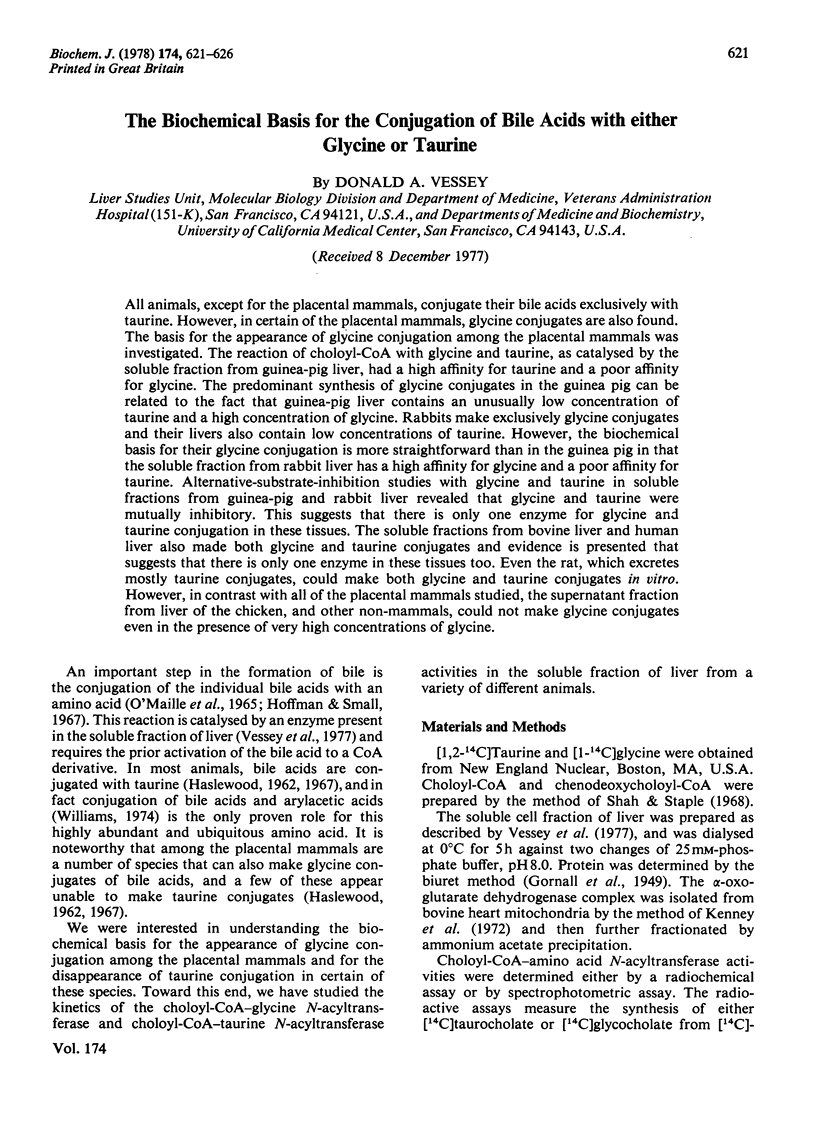
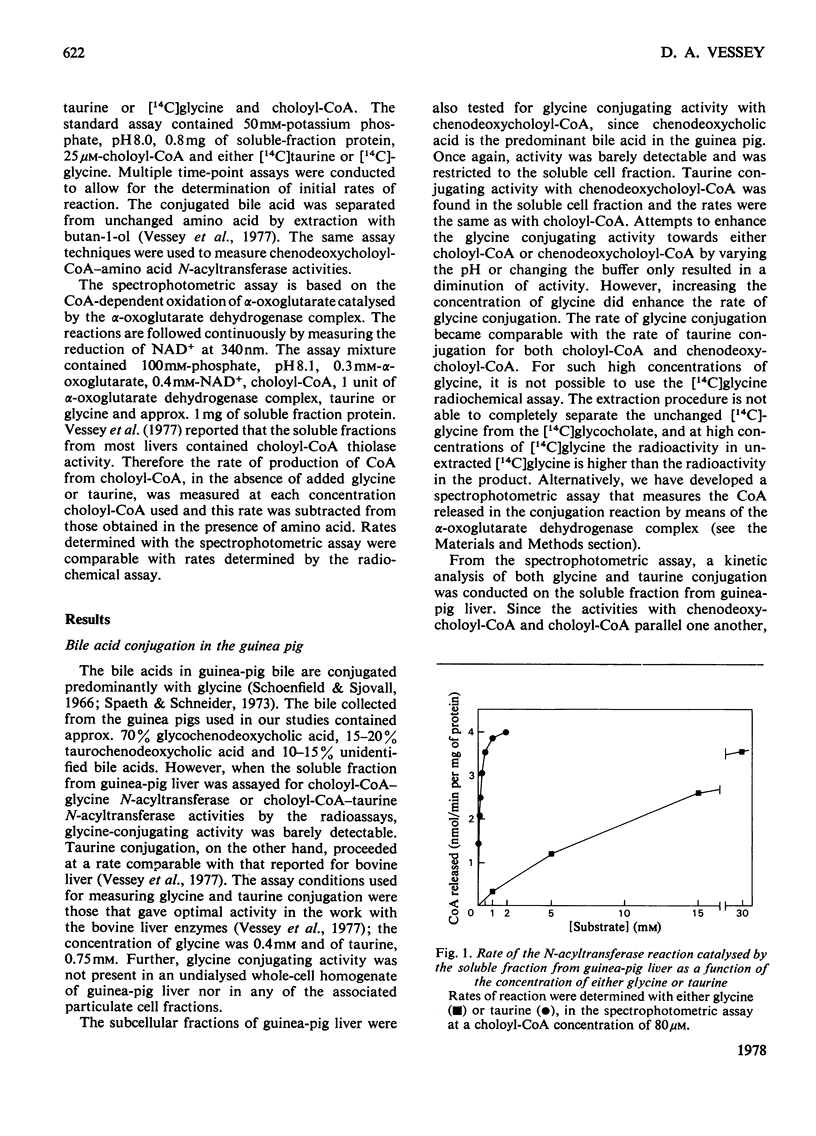
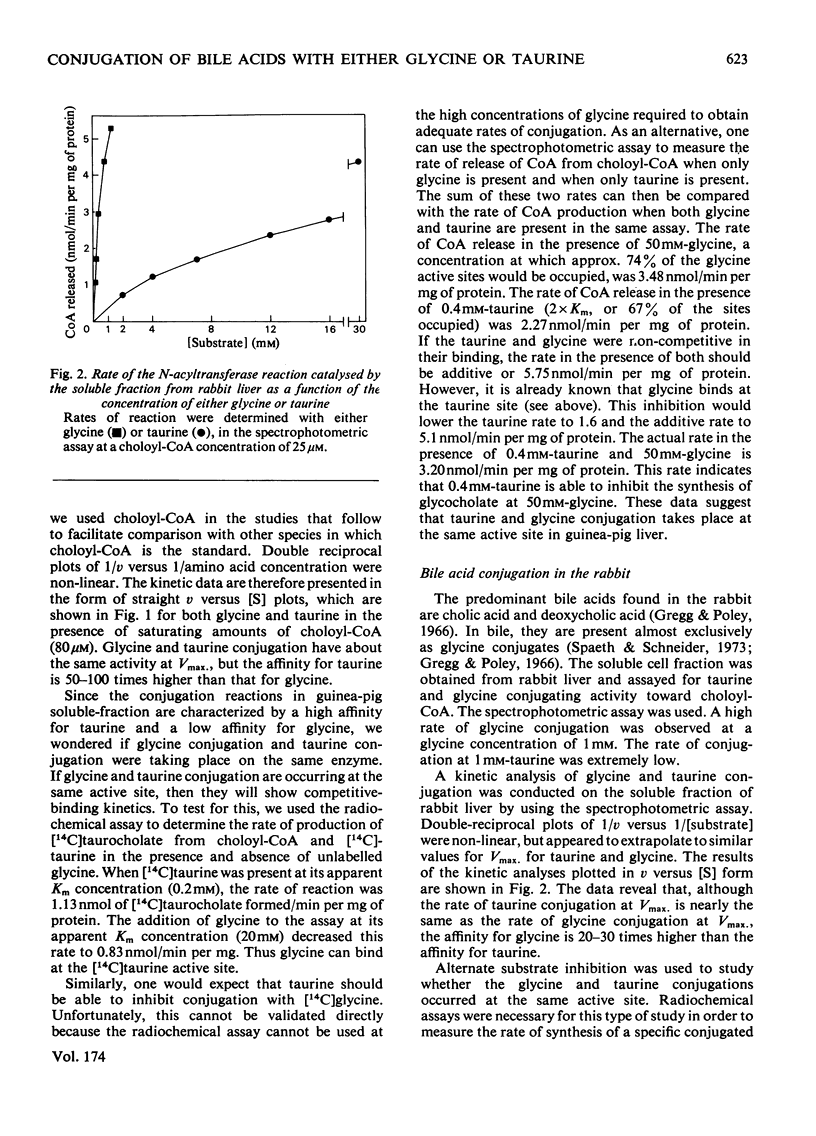
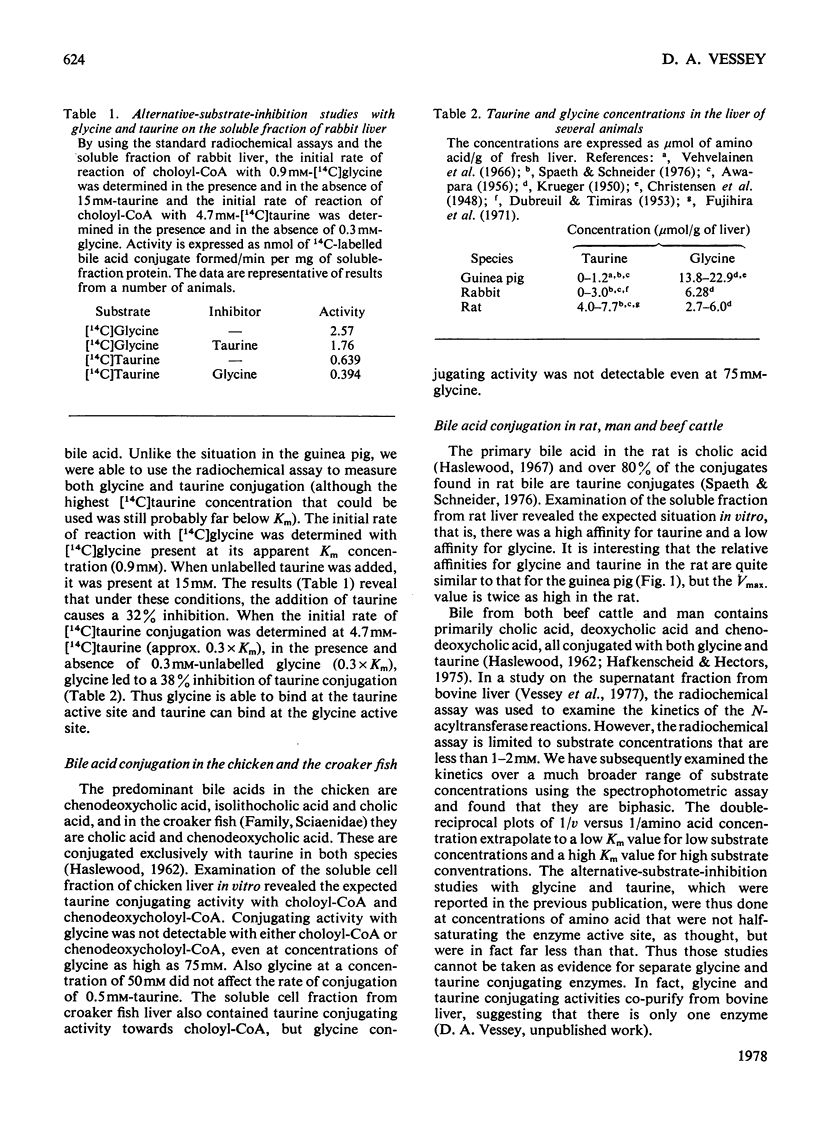
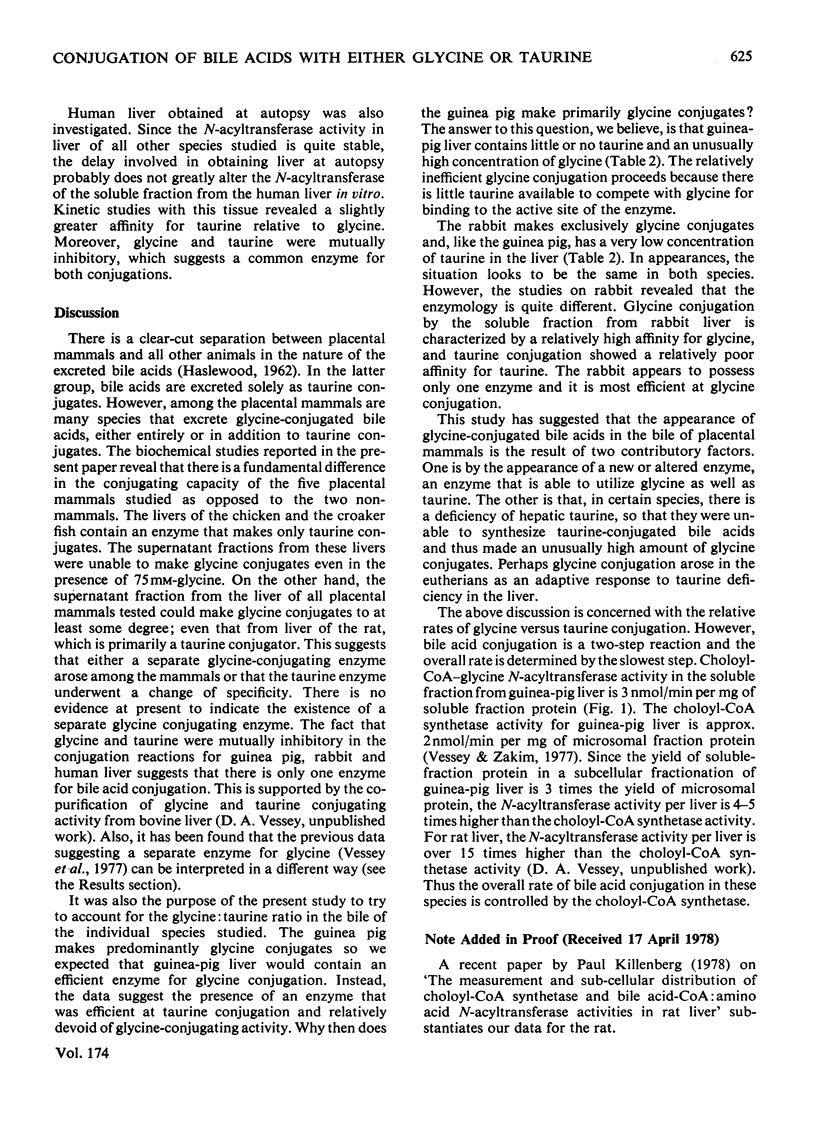
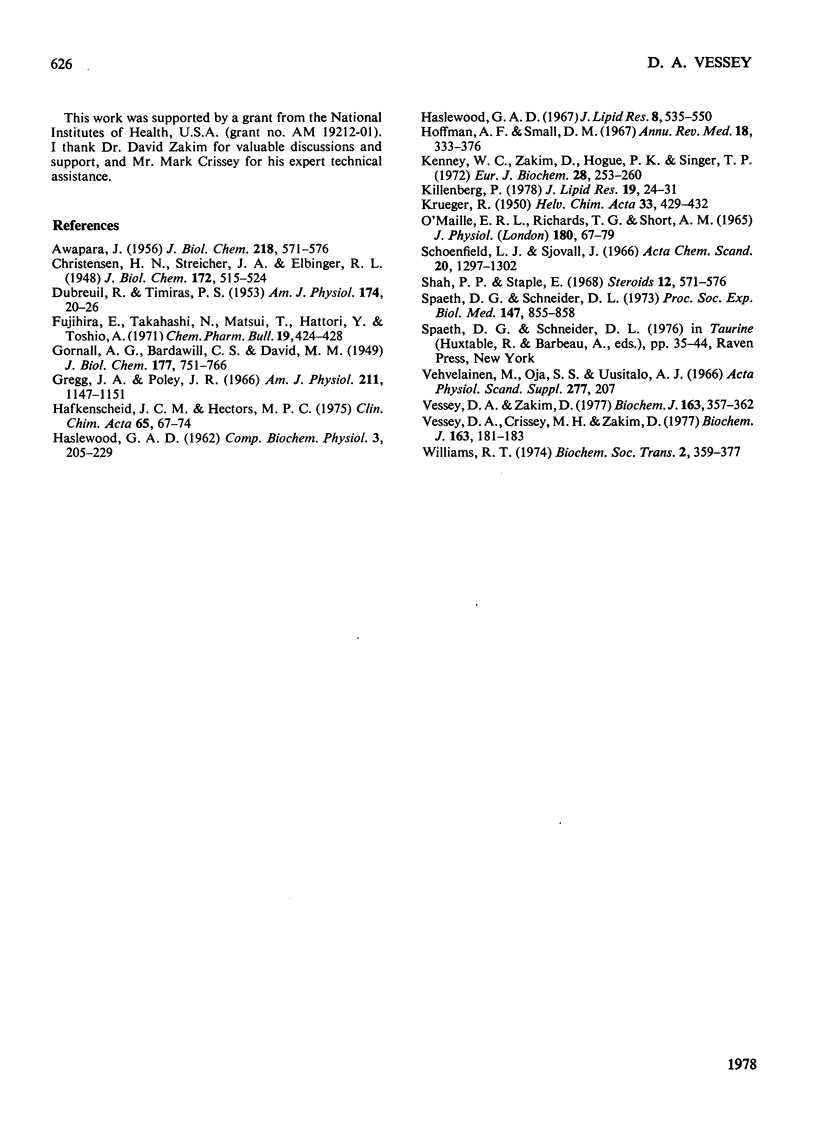
Selected References
These references are in PubMed. This may not be the complete list of references from this article.
- AWAPARA J. The taurine concentration of organs from fed and fasted rats. J Biol Chem. 1956 Feb;218(2):571–576. [PubMed] [Google Scholar]
- DUBREUIL R., TIMIRAS P. S. Effect of cortisone on free amino acids in the serum and organs of the rabbit. Am J Physiol. 1953 Jul;174(1):20–26. doi: 10.1152/ajplegacy.1953.174.1.20. [DOI] [PubMed] [Google Scholar]
- Fujihira E., Takahashi N., Matsui T., Hattori Y., Arai T. Plasma and tissue concentrations of free taurine and amino acids in fasted, and hyper- or hypothyroid diet fed rats. Chem Pharm Bull (Tokyo) 1971 Feb;19(2):424–428. doi: 10.1248/cpb.19.424. [DOI] [PubMed] [Google Scholar]
- Gregg J. A., Poley J. R. Excretion of bile acids in normal rabbits. Am J Physiol. 1966 Nov;211(5):1147–1151. doi: 10.1152/ajplegacy.1966.211.5.1147. [DOI] [PubMed] [Google Scholar]
- Hafkenscheid J. C., Hectors M. P. An enzymic method for the determination of the glycine/taurine ratio of conjugated bile acids in bile. Clin Chim Acta. 1975 Nov 15;65(1):67–74. doi: 10.1016/0009-8981(75)90335-6. [DOI] [PubMed] [Google Scholar]
- Haslewood G. A. Bile salt evolution. J Lipid Res. 1967 Nov;8(6):535–550. [PubMed] [Google Scholar]
- Hofmann A. F., Small D. M. Detergent properties of bile salts: correlation with physiological function. Annu Rev Med. 1967;18:333–376. doi: 10.1146/annurev.me.18.020167.002001. [DOI] [PubMed] [Google Scholar]
- Kenney W. C., Zakim D., Hogue P. K., Singer T. P. Multiplicity and origin of isoenzymes of lipoyl dehydrogenase. Eur J Biochem. 1972 Jul 13;28(2):253–260. doi: 10.1111/j.1432-1033.1972.tb01908.x. [DOI] [PubMed] [Google Scholar]
- Killenberg P. G. Measurement and subcellular distribution of choloyl-CoA synthetase and bile acid-CoA:amino acid N-acyltransferase activities in rat liver. J Lipid Res. 1978 Jan;19(1):24–31. [PubMed] [Google Scholar]
- O'Máille E. R., Richards T. G., Short A. H. Acute taurine depletion and maximal rates of hepatic conjugation and secretion of cholic acid in the dog. J Physiol. 1965 Sep;180(1):67–79. [PMC free article] [PubMed] [Google Scholar]
- Schoenfield L. J., Sjövall J. Identification of bile acids and neutral sterols in guinea pig bile. Bile acids and steroids 163. Acta Chem Scand. 1966;20(5):1297–1303. doi: 10.3891/acta.chem.scand.20-1297. [DOI] [PubMed] [Google Scholar]
- Shah P. P., Staple E. Synthesis of coenzyme A esters of some bile acids. Steroids. 1968 Nov;12(5):571–576. doi: 10.1016/s0039-128x(68)80034-0. [DOI] [PubMed] [Google Scholar]
- Spaeth D. G., Schneider D. L., Sarett H. P. Taurine synthesis, concentration, and bile salt conjugation in rat, guinea pig, and rabbit. Proc Soc Exp Biol Med. 1974 Dec;147(3):855–858. doi: 10.3181/00379727-147-38455. [DOI] [PubMed] [Google Scholar]
- Vessey D. A., Crissey M. H., Zakim D. Kinetic studies on the enzymes conjugating bile acids with taurine and glycine in bovine liver. Biochem J. 1977 Apr 1;163(1):181–183. doi: 10.1042/bj1630181. [DOI] [PMC free article] [PubMed] [Google Scholar]
- Vessey D. A., Zakim D. Characterization of microsomal choloyl-coenzyme A synthetase. Biochem J. 1977 May 1;163(2):357–362. doi: 10.1042/bj1630357. [DOI] [PMC free article] [PubMed] [Google Scholar]


